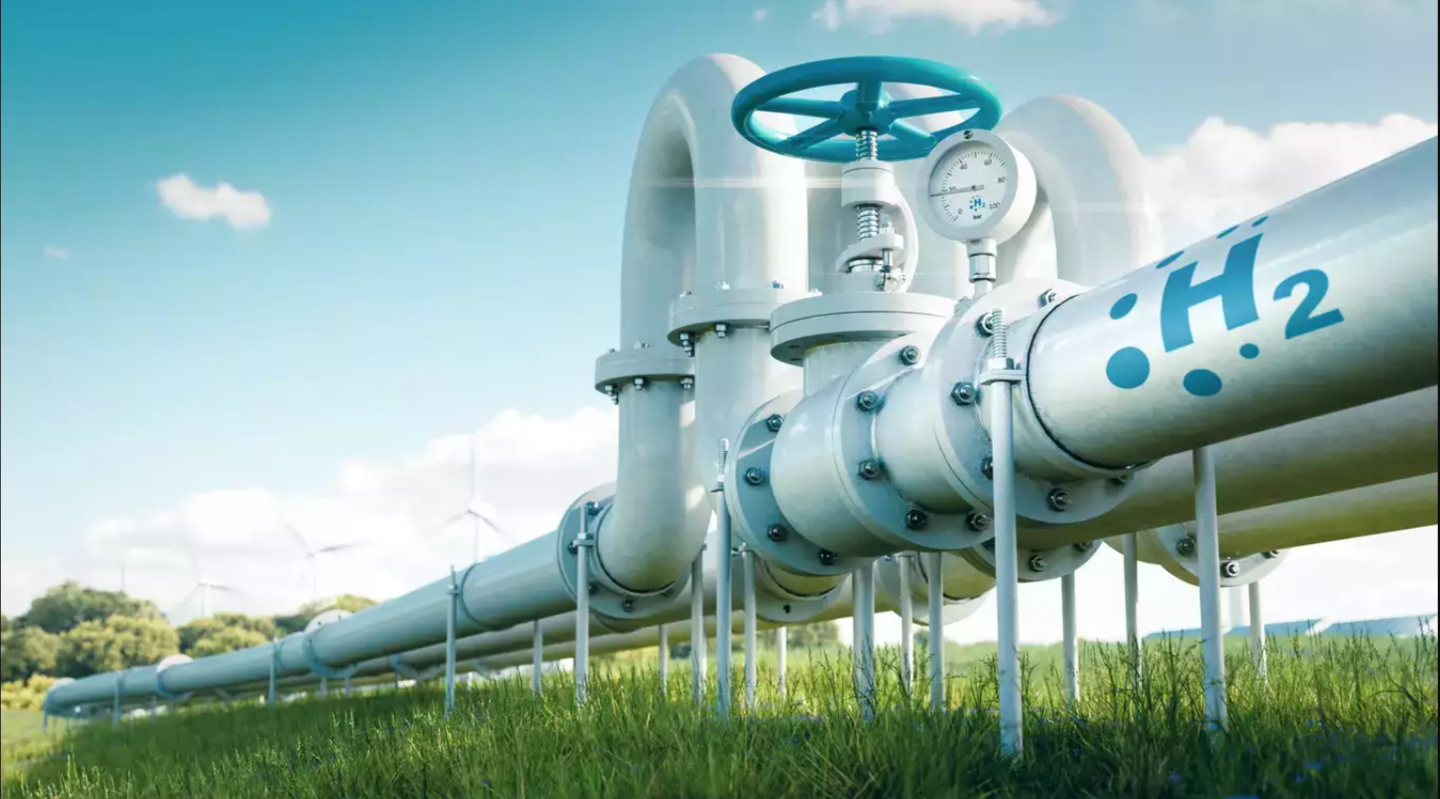Scientists successfully produce highly efficient, low-cost “green” hydrogen
Hydrogen is a necessary raw material for both agriculture and industry, but 95% of global hydrogen is made from coal or natural gas.

[July 19, 2023: Noga Shahar, Tel-Aviv University]
Hydrogen is a necessary raw material for both agriculture and industry, but 95 percent of the hydrogen produced in the world today is “black” or “gray”. (CREDIT: Creative Commons)
Researchers from Tel Aviv University have succeeded in producing “green” hydrogen using green electricity — The hydrogen is produced without air pollution, with a high level of efficiency, utilizing a biocatalyst.
Hydrogen is a necessary raw material for both agriculture and industry, but 95 percent of the hydrogen produced in the world today is “black” or “gray” — produced from coal or natural gas and emitting 9-12 tons of carbon dioxide for every ton of hydrogen.
The new method was developed by doctoral student Itzhak Grinberg and Dr. Oren Ben-Zvi, under the guidance of Prof. Iftach Yacoby of the School of Plant Sciences and Food Security at the Faculty of Life Sciences and Prof. Lihi Adler-Abramovich of the School of Dental Medicine and the Center for Nanoscience and Nanotechnology.
The promising research results were published in the prominent journal Carbon Energy, focusing on advanced materials and technology for clean energy and CO2 emission reduction.
Related Stories
“Hydrogen is very rare in the atmosphere,” explains Itzhak Grinberg, “although it is produced by enzymes in microscopic organisms, which receive the energy for this from photosynthesis processes. In the lab, we “electrify” those enzymes, that is, an electrode provides the energy instead of the sun."
"The result is a particularly efficient process, with no demand for extreme conditions, that can utilize electricity from renewable sources such as solar panels or wind turbine. However, the enzyme ‘runs away’ from the electric charge, so it needs to be held in place through chemical treatment. We found a simple and efficient way to attach the enzyme to the electrode and utilize it,” he continued.
The researchers used a hydrogel (a water-based gel) to attach the enzyme to the electrode, and were able to produce green hydrogen using a biocatalyst, and with over 90 percent efficiency; that is, over 90 percent of the electrons introduced into the system were deposited in the hydrogen without any secondary processes.
The research team: The new method was developed by doctoral student Itzhak Grinberg and Dr. Oren Ben-Zvi, under the guidance of Prof. Iftach Yacoby of the School of Plant Sciences and Food Security at the Faculty of Life Sciences and Prof. Lihi Adler-Abramovich of the School of Dental Medicine and the Center for Nanoscience and Nanotechnology. (CREDIT: Tel Aviv University)
Prof. Iftach Yacoby explains that, “The material of the gel itself is known, but our innovation is to use it to produce hydrogen. We soaked the electrode in the gel, which contained an enzyme for producing hydrogen, called hydrogenase. The gel holds the enzyme for a long time, even under the electric voltage, and makes it possible to produce hydrogen with great efficiency and at environmental conditions favorable to the enzyme — for example, in salt water, in contrast to electrolysis, which requires distilled water. "
Prof. Lihi Adler-Abramovich adds: “Another advantage is that the gel assembles itself — you put the material in water, and it settles into nanometric fibers that form the gel. We demonstrated that these fibers are also able to stick the enzyme to the electrode. We tested the gel with two other enzymes, in addition to the hydrogenase, and proved that it was able to attach different enzymes to the electrode.”
Schematic diagram of electrode preparation. (CREDIT: Carbon Energy)
“Today, ‘green’ hydrogen is produced primarily through electrolysis, which requires precious and rare metals such as platinum along with water distillation, which makes the green hydrogen up to 15 times more expensive than the polluting ‘grey’ one, says Dr. Oren Ben-Zvi. “We hope that in the future, it will be possible to employ our method commercially, to lower the costs, and to make the switch towards using green hydrogen in industry, agriculture, and as a clean energy source.”
How can green hydrogen be used by industry?
Green hydrogen can be used in industry in a variety of ways, including:
Ammonia production: Hydrogen is a key component in the production of ammonia, which is used in a wide range of industrial applications, including fertilizers, plastics, and explosives. Green hydrogen can be used to produce ammonia without emitting greenhouse gases.
Oil refining: Hydrogen is used in oil refining to remove sulfur from crude oil. This process, known as hydrotreating, produces cleaner-burning fuels and reduces emissions. Green hydrogen can be used to hydrotreat crude oil without emitting greenhouse gases.
Methanol production: Hydrogen is also used in the production of methanol, which is a versatile fuel that can be used in transportation, power generation, and other applications. Green hydrogen can be used to produce methanol without emitting greenhouse gases.
Steelmaking: Hydrogen can be used to reduce iron ore in the production of steel. This process, known as direct reduction, produces less emissions than traditional methods of steelmaking. Green hydrogen can be used to reduce iron ore without emitting greenhouse gases.
Other industrial applications: Green hydrogen can also be used in other industrial applications, such as glassmaking, electronics manufacturing, and food processing.
The use of green hydrogen in industry has the potential to significantly reduce greenhouse gas emissions and help to decarbonize the global economy. However, the cost of green hydrogen is still relatively high, so there is a need to scale up production and reduce costs in order to make it more competitive with fossil fuels.
Companies that are using green hydrogen in industry:
Shell: Shell is one of the world's leading oil and gas companies, and it is also a major player in the green hydrogen market. Shell is developing green hydrogen projects in a number of countries, including Australia, Germany, and the Netherlands.
Linde: Linde is a leading industrial gases company, and it is also a major player in the green hydrogen market. Linde is developing green hydrogen projects in a number of countries, including the United States, China, and Japan.
Bloom Energy: Bloom Energy is a company that develops and manufactures fuel cells that produce electricity from hydrogen. Bloom Energy's fuel cells are used in a variety of applications, including data centers, hospitals, and manufacturing facilities.
These are just a few of the companies that are using green hydrogen in industry. As the cost of green hydrogen continues to fall, we can expect to see even more companies adopt this clean and sustainable fuel.
For more green news stories check out our Green Impact section at The Brighter Side of News.
Note: Materials provided above by Tel-Aviv University. Content may be edited for style and length.
Like these kind of feel good stories? Get the Brighter Side of News' newsletter.



